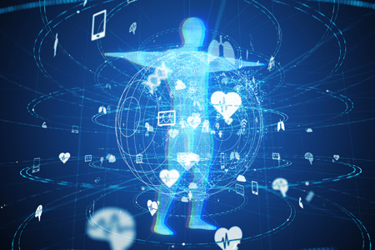The Convergence Of Consumer Wellness And Healthcare
By Jenna Phillips and David Knies

The traditional boundaries between consumer wellness and healthcare are rapidly dissolving. This convergence is creating unprecedented opportunities for innovation, while fundamentally changing how individuals engage with their health.
Spanning multiple sectors, from pharmaceuticals to retail, this transformation has far-reaching implications for both consumers and healthcare providers. Companies that effectively bridge this gap — whether through technology, service delivery, or data integration — will shape the future of healthcare delivery and consumer wellness.
The GLP-1 Revolution: Beyond Weight Loss
The rise of GLP-1 medications has catalyzed a new "GLP-1 Economy" that extends far beyond pharmaceuticals. This emerging ecosystem includes specialized meal delivery services, tech-enabled coaching platforms, and modified fitness programs designed specifically for GLP-1 users.
Major retailers are responding to this shift. For example, Walmart has launched specialized nutrition services, while companies like Noom have integrated GLP-1 programs into their platforms. The impact reaches unexpected sectors — from restaurants adapting portion sizes to clothing retailers adjusting their size ranges and inventory planning and management.
Consumer Technology As Medical Infrastructure
The integration of medical capabilities into everyday consumer devices is accelerating. Apple Watch's AFib detection and fall monitoring have already saved lives, while biometric sensor-enabled wearables from OURA and Whoop provide a holistic picture of sleep, strain, recovery, and health monitoring to their users. These aren't merely wellness features; they're becoming part of the medical infrastructure. As electronic health records are increasingly able to store patient- and consumer-reported data, clinicians can begin to leverage this data to inform clinical decision-making and recommendations.
This trend is particularly evident in the continuous monitoring space. Several brands have transformed continuous glucose monitoring from a diabetic necessity into a wellness tool used by athletes and health enthusiasts. Additionally, companies like Levels and January AI have built entire platforms around CGM data interpretation for non-diabetic users.
The femtech sector further exemplifies this convergence. Some examples include temperature monitoring for cycle tracking and fertility planning and smart breast pumps, which bring hospital-grade technology into the home. These devices go beyond simply collecting data, they're providing actionable medical insights that can change consumers’ behaviors.
Retail Healthcare: The New Front Line
In recent years, there has been an uptick in traditional retailers shifting toward becoming healthcare providers or at least integrating healthcare delivery capabilities into their business models.
For example, Best Buy Health's partnership with health systems for remote patient monitoring demonstrates how consumer electronics expertise can translate into healthcare delivery. Their acquisition of Critical Signal Technologies and Current Health shows their commitment to bridging the consumer-medical divide.
Additionally, CVS Health has been approaching the consumerization of healthcare with various vertical integrations, exemplified by their acquisitions of Oak Street Health and Signify Health. These services, combined with their MinuteClinics, create a comprehensive healthcare ecosystem built on consumer accessibility.
These examples demonstrate that consumer-facing retailers are bullish about the opportunity to use their existing physical retail footprint as an opportunity for customer acquisition in their other lines of business. However, not all attempts have succeeded. In some instances, companies have abandoned their efforts in healthcare delivery due to high costs and challenging regulatory requirements, such as the inability to refer patients directly to their own in-house pharmacies.
For organizations that can figure out the right business model, there are still opportunities to leverage their retail footprint to improve healthcare access and to generate new revenue streams by offering healthcare products and services. Using web browsing, retail, and financial data to predict purchasing behaviors could support a business case for more retailers to enter the health and wellbeing product category.
Over the years, there have been many compelling examples of retailers showcasing deep expertise in customer behavior. These insights can offer incentives to nudge consumers toward purchase of health-related products, even if they do not become healthcare providers directly.
Data Integration And Personalization
As consumer wearables become healthcare companions, the ability to seamlessly share health data between consumer devices and healthcare providers is enabling more personalized care. For example, Apple's Health Records feature, adopted by hundreds of health institutions, allows patients to view their medical records alongside their fitness and wellness data. This integration enables better-informed healthcare decisions and more effective preventive care. Additionally, Apple HealthKit allows consumers to contribute their data to research studies to develop personalized insights and treatments for serious medical conditions across many therapeutic areas.
Across the industry, there are organizations working to build infrastructure to make health data sharing more efficient. This effort has several practical applications, including the ability for insurance companies to offer better-tailored policies, while pharmaceutical companies can recruit for clinical trials more effectively.
Real-World Applications And Impact
In many cases, the integration of patient wellbeing and healthcare is being led by consumer-facing technology companies that are using their access to individual customers to help them achieve their health and wellness goals.
Samsung has partnered with Medicare Advantage plans to provide seniors with subsidized smartwatches for fall detection and emergency response. Google’s Fitbit has established collaborations with pharmaceutical companies to support early detection of atrial fibrillation and inform treatment. When patients are referred for cardiac rehabilitation, some now have the option to use their Peloton bike to integrate heart rate data with their medical record for their healthcare providers’ review.
What is so powerful about these technology-led use cases is that they meet the consumer where they are, rather than forcing a new way of working or major lifestyle change. In the healthcare context, it is common for new technologies or innovations to be introduced in addition to existing workflows, often resulting in low uptake and low impact. Alternatively, when new solutions are integrated with the tools or products that consumers use already — their smartphones or exercise bikes — it is likelier that use will be more consistent, and the health impact will be greater.
Future Implications
The convergence of healthcare and wellness presents both opportunities and challenges, including:
- Privacy and Security: As health data becomes more integrated with consumer platforms, ensuring data security while maintaining accessibility becomes crucial.
- Regulatory Evolution: The FDA's Digital Health Center of Excellence signals a more nuanced approach to regulating consumer health technology.
- Healthcare Equity: Consumer health technology could either bridge or widen healthcare access gaps, depending on implementation and accessibility.
- Preventative Care: The integration of consumer technology with healthcare systems enables earlier intervention and more effective preventive care strategies.
Solving these challenges will require a fundamental shift in health management. Success in this new paradigm can only be achieved through a clear understanding of both consumer behavior and medical necessity.
The transformation is ongoing, with new innovations emerging regularly. As consumer expectations for healthcare accessibility increase and technology capabilities expand, this evolution will likely accelerate, creating new opportunities for companies that can effectively operate at the intersection of consumer wellness and healthcare.
About The Authors:
 Jenna Phillips is a health and life sciences expert at PA Consulting.
Jenna Phillips is a health and life sciences expert at PA Consulting.
 David Knies is a wellness, research and innovation strategy expert at PA Consulting.
David Knies is a wellness, research and innovation strategy expert at PA Consulting.
